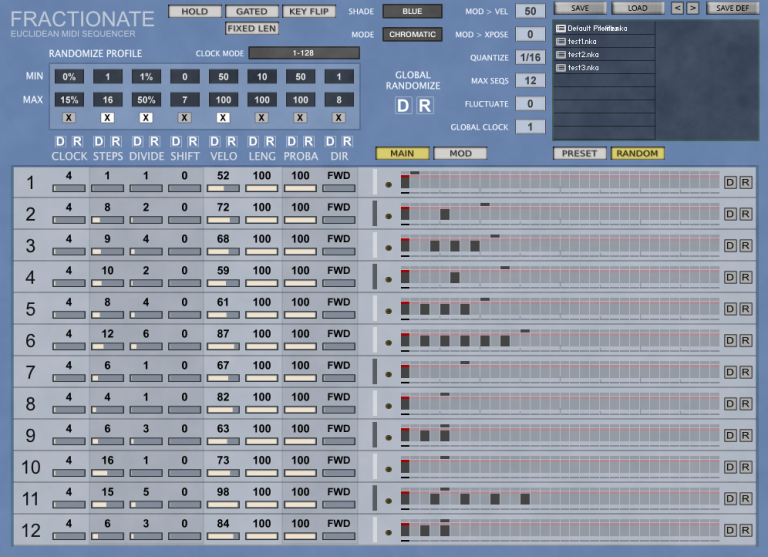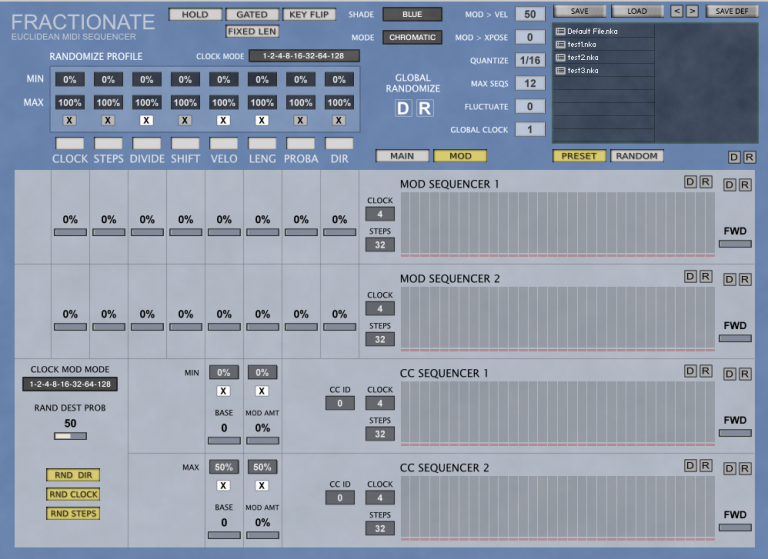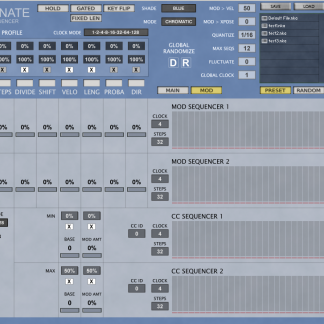Euclidean Sequences are based on an algorithm which takes ‘A’ number of steps and distributes and distributes ‘B’ number of pulses as evenly as possible which results in fascinating Rhythms. It is more often used for Drums however it works great for Melodic Sequences too. You could also point this at a Drum kit as it is a MIDI sequencer and so the instrument generates no sound of its own, but is designed to be pointed at a hardware synth or VSTi.
Sequencer Parameters
- BPM – waits ‘X’ number of pulses therefore slowing down the master clock which can lead to some very experimental territory.
- Shift – allows offsetting the start of the Sequence by shifting it to the right.
- Velocity – is set per Sequence and so if you assign velocity to modulate parameters in your Synth it can be used in an interesting way beyond standard velocity.
- Length – is the Length of the not as a percentage of the current clock/BPM setting
- Probability – allows adding random variance by reducing the chances of a step playing.
- Direction – determines how the Sequencer will function, choose between Forward, Reverse, various Alternate modes, Random and Toggle. Toggle uses randomization to decide where it goes to the next step or the previous.
![]()
Here’s a video controlling Dune 2 with Velocity assigned to Sync and Filter Cutoff
There is also a Default file which you can save yourself using the ‘Save Def’ button which saves the current state and is used as a reference by all of the ‘D’ default buttons.
If you haven’t done so already you need to open standalone Kontakt and enable the Midi output in the Options.
v1.1 adds 2 Modulation Sequencers and 2 CC Sequencers for some advanced experimentation if you want to take things further.
Routing
If you are unsure how to route MIDI from Kontakt to another Virtual Instrument, this video shows how to do it in several hosts:




Reviews
There are no reviews yet.